what moisture should firewood be? Most of us use firewood in our homes to keep warm and even when cooking. However, sometimes your firewood produces insufficient heat or too much smoke. Then you’re left wondering if you’re burning the right wood or if it’s dry enough.
If you’ve been wondering what moisture content firewood should be or what moisture should firewood be, worry no more. Today, we’ll tell you all you need to know about perfect firewood seasoning.
Let’s get started.
What Is the Ideal Moisture Content of Firewood?
You must check the moisture content of your firewood before burning it. And you can use a moisture meter to get quick and precise results.
When doing so, ensure that your firewood has a moisture content of roughly 20 percent or lower. However, in most cases, the moisture content shouldn’t be lower than 10 percent.
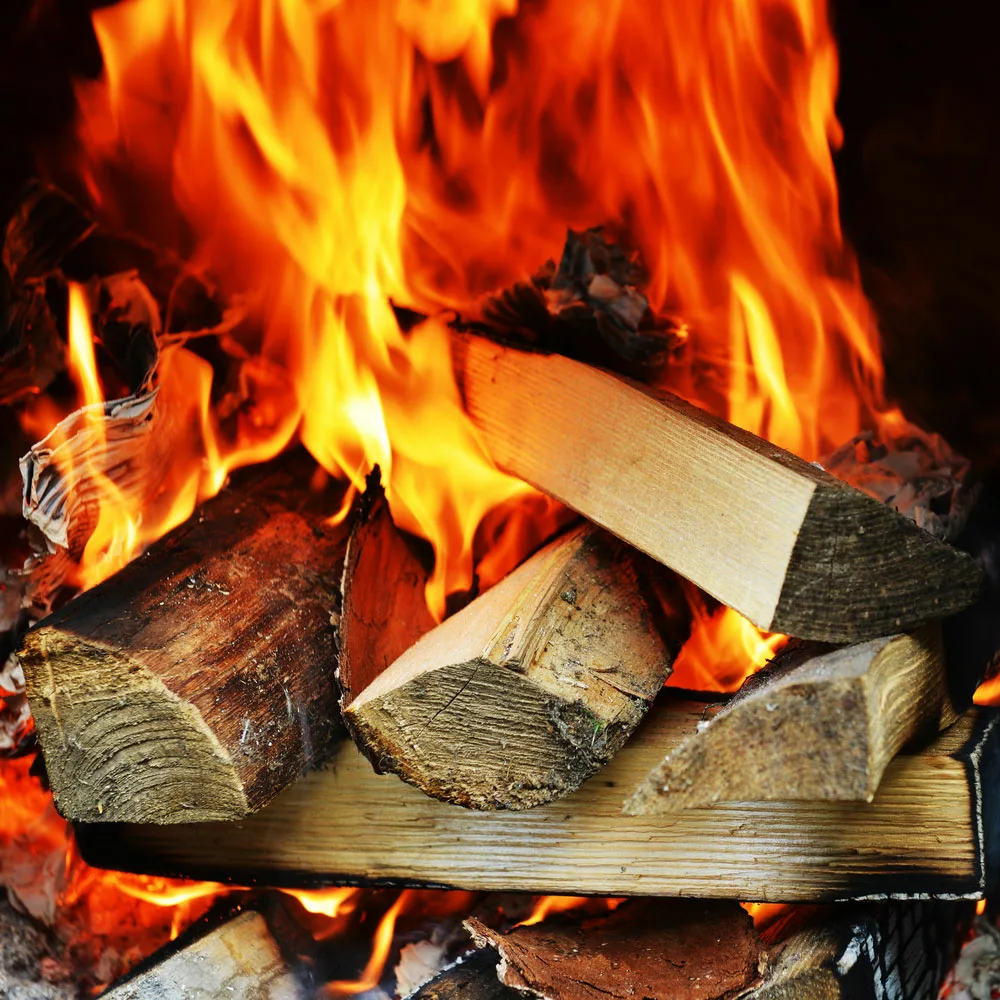
(Burning firewood)
Why Is This So Important?
Seasoned firewood generates twice as much heat as wet one. The reason is that wet firewood uses heat to dry itself by boiling away its moisture content. Such renders wet firewood as a very costly heat source.
Additionally, burning wet wood seriously harms your chimney system and indoor air quality.
On the flip side, overseasoned firewood with less than 10 percent moisture content is uneconomical. The firewood burns too quickly while producing a lot of undesirable emissions.
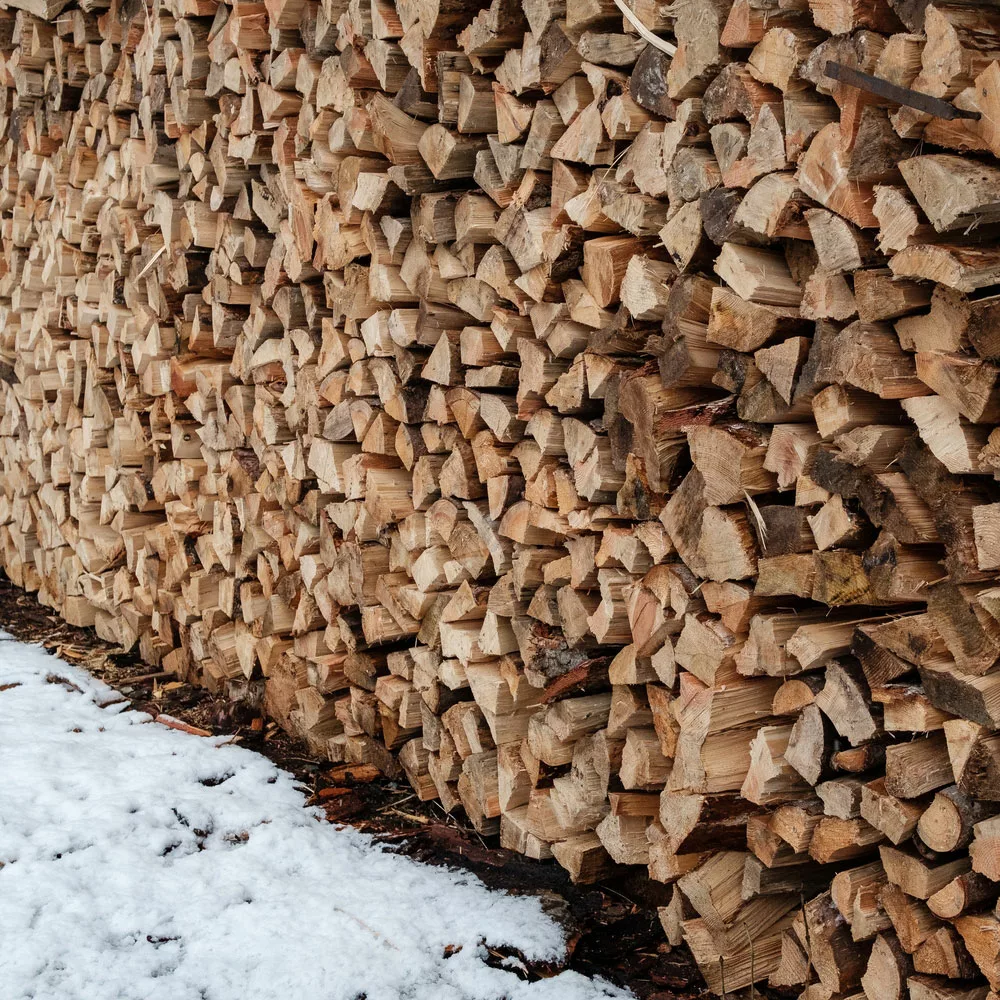
(Dry wood in storage)
How to Check the Moisture Content of Firewood?
It’s easier to check the moisture content of smaller firewood pieces than logs. Regardless, here are quick tests you can employ:
One is to hear the sound two pieces of firewood create when banged together. If you hear a hollow, sharp ringing sound, your firewood has an allowable moisture content.
The second test is the soap test. Place dish soap against one end of the firewood and blow through the opposite end. If the soap forms bubbles, your firewood must still be dry.
The third and most precise test is the moisture meter test.
- How to Use a Moisture Meter to Check the Moisture Content of Firewood
Most firewood moisture meters feature two little probes that you’ll place into the wood approximately a quarter-inch deep. It will only show you the moisture level at that depth. To get accurate results, split off some firewood pieces and place the prongs against the center portion to get a precise reading.
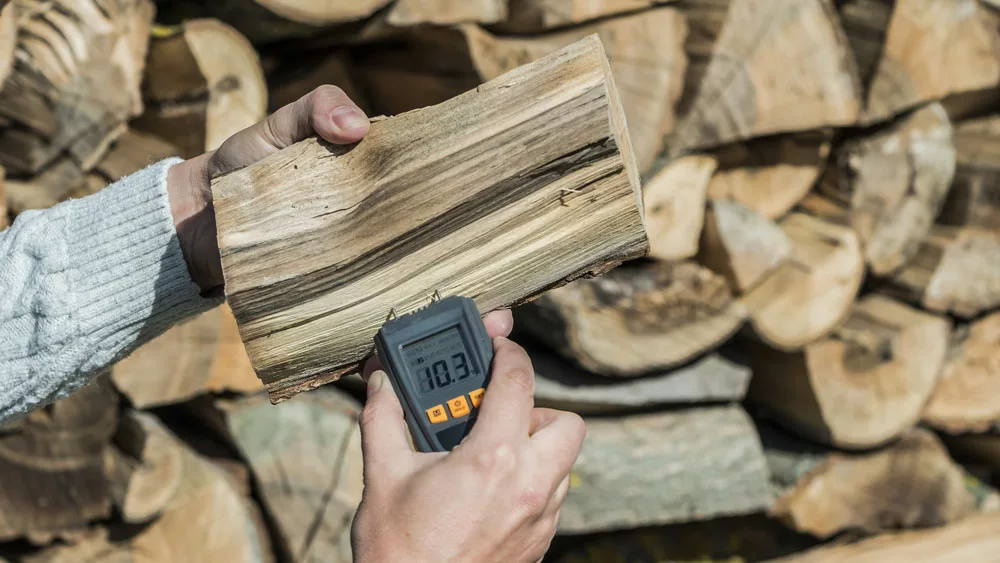
(Check the moisture content of firewood)
How Do You Ensure That Wood Dries and Prevents It From Rotting?
You can store firewood for an indefinite period as long as you store it well to keep it from rotting. The first step is identifying an ideal site to set up your woodpile. The woodpile should be approximately 30 feet from your house since rodents and bugs live around it.
Upon delivery of the wood to your house, stack the firewood neat and orderly. Preferably stack wood off the earth; a first layer of pallets works well. Also, stack the firewood loosely, up to two layers.
And remember, purchase your firewood a year or more before you want to utilize it. Doing so will often give you enough time to check if the wood’s moisture level is within a safe range before burning it.
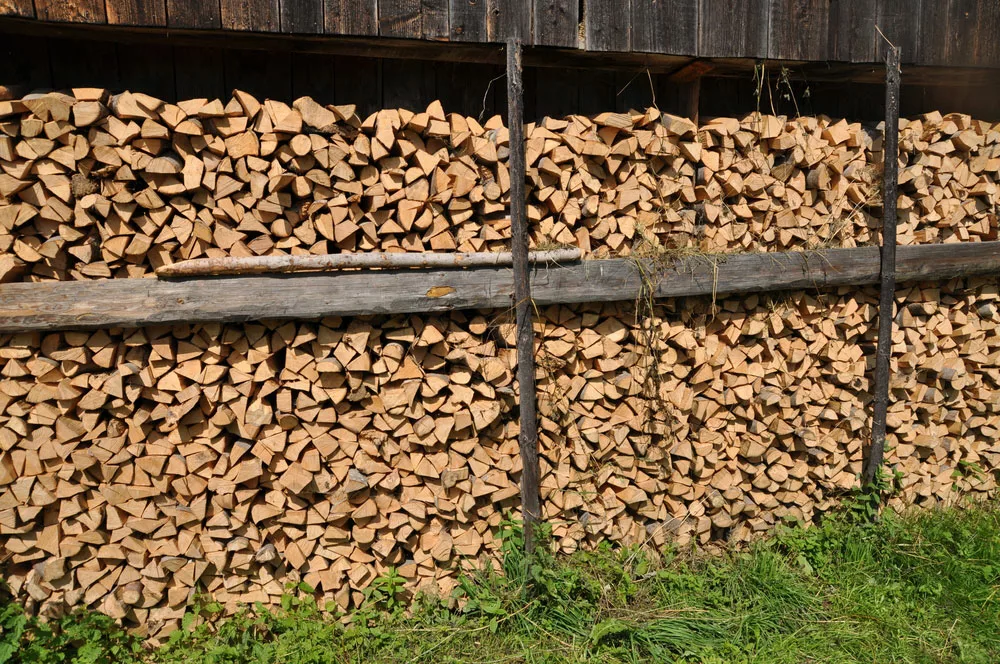
(Stacked firewood logs)
The Main Difference Between Wet and Dry Wood
Here’s a table highlighting the difference between wet wood and ideal dry firewood.
| Dry Firewood | Wet Firewood | |
| Color | Brown | Greenish |
| Weight | Lighter | Heavier |
| Texture | Rough | Smooth |
| Barks | Peels easily | Softer and attached to wood |
In other words, you can tell that your firewood is dry enough if:
- It is completely brown
- Has no green pigmentation
- Splits and radial cracks may be developing at the ends
- The bark is easier to peel off or is coming away on its own
- It may have a hollow sound when you hit two pieces together
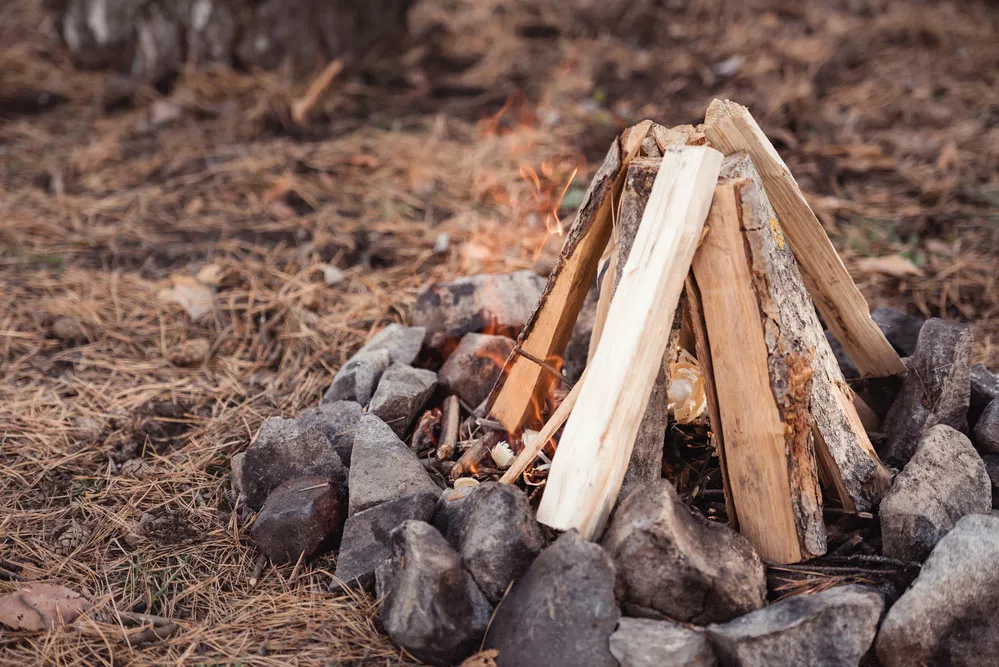
(Pile up the timber)
What Happens When Firewood Gets Too Dry?
Firewood with moisture content lower than 10 percent burns quickly and becomes difficult to manage. The temperatures may get extremely high, close to 1000℃, to the extent that it may damage your fireplace.
Drying your firewood excessively is difficult since the surrounding humidity keeps the moisture content from falling below 10 percent. But if you dry it even further, you should expect the wood to burn more quickly. Overdried firewood is only great for kindling rather than as the main firewood.
Overseasoned wood burns through its fire cycles in less than the ideal 4 to 8 hours, making it uneconomical. You’ll have to use more firewood to keep the fire burning.
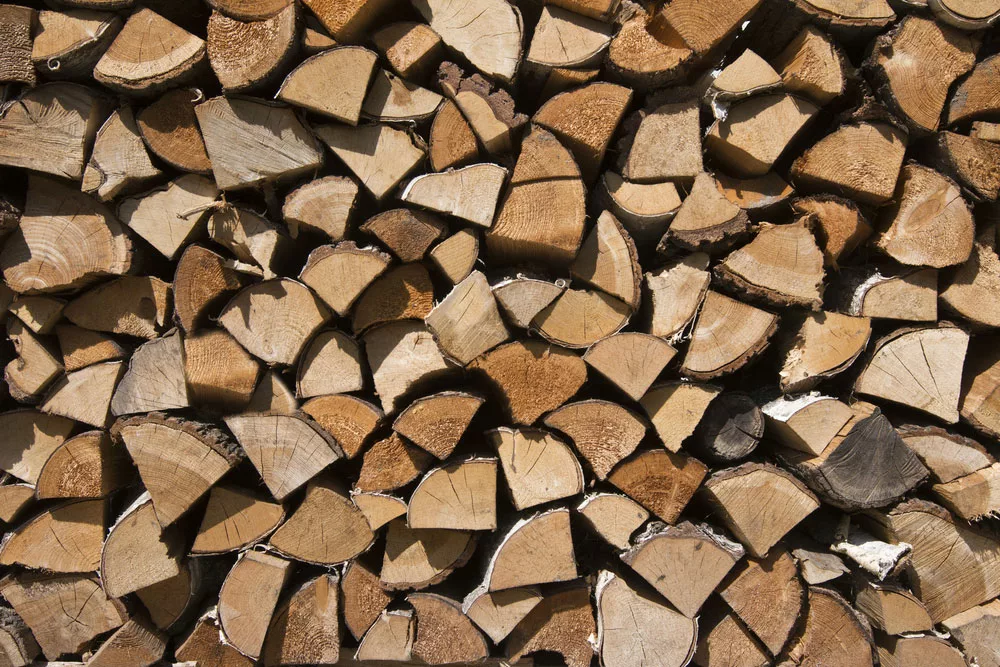
(Heaped firewood)
Guidelines for Moisture Content of Firewood
Understanding firewood seasoning is important to ensure that your firewood has the right moisture content. Let’s look at some common firewood’s moisture contents and seasoning periods.
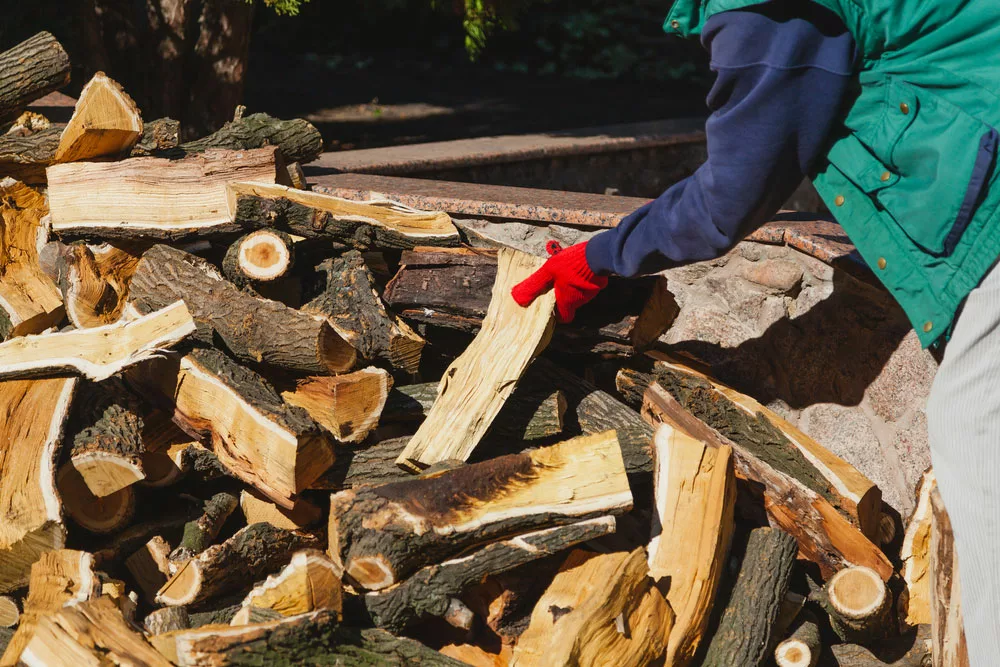
(Inspecting seasoned firewood)
Apple:
Apple is pricey firewood that produces a sweet aroma upon burning. Depending on the firewood’s thickness and internal moisture, applewood generally contains around 60 percent moisture. And it would be best if you seasoned applewood for a minimum of one year to get the best firewood.
Ash:
Green and white ash firewood varieties contain nearly 33 percent moisture when newly cut. In ideal conditions, you’ll season ashwood for a minimum of six months for the moisture to drop 20 percent below.
Birch:
Freshly cut black and yellow birch firewood has a moisture content of around 44 percent. In a good environment, season birch for more than six months to lower its moisture content.
Cherry:
If you want a good-smelling fire, cherry wood is the way to go. Green cherry wood has a high moisture content of about 70 percent. Consequently, it takes longer to season and should dry well after a seasoning period of at least two years.
Hickory:
Shagbark hickory has a moisture content of approximately 40 percent. Therefore, the wood requires a seasoning period of at least one year to be useful as firewood.
Maple:
All hard maple wood varieties make excellent firewood. Freshly cut maple wood contains approximately 45 percent moisture content and requires a seasoning period of a minimum of six months.
Oak:
Black, red, and white oak logs make excellent, long-lasting firewood. When freshly cut, they’ll contain roughly 60 percent moisture content and require a minimum 2 years seasoning period.
Walnut:
Freshly cut walnuts have a higher 70 to 80 percent moisture content. Consequently, season all walnut firewood for a minimum of one year to ensure you get good quality firewood.
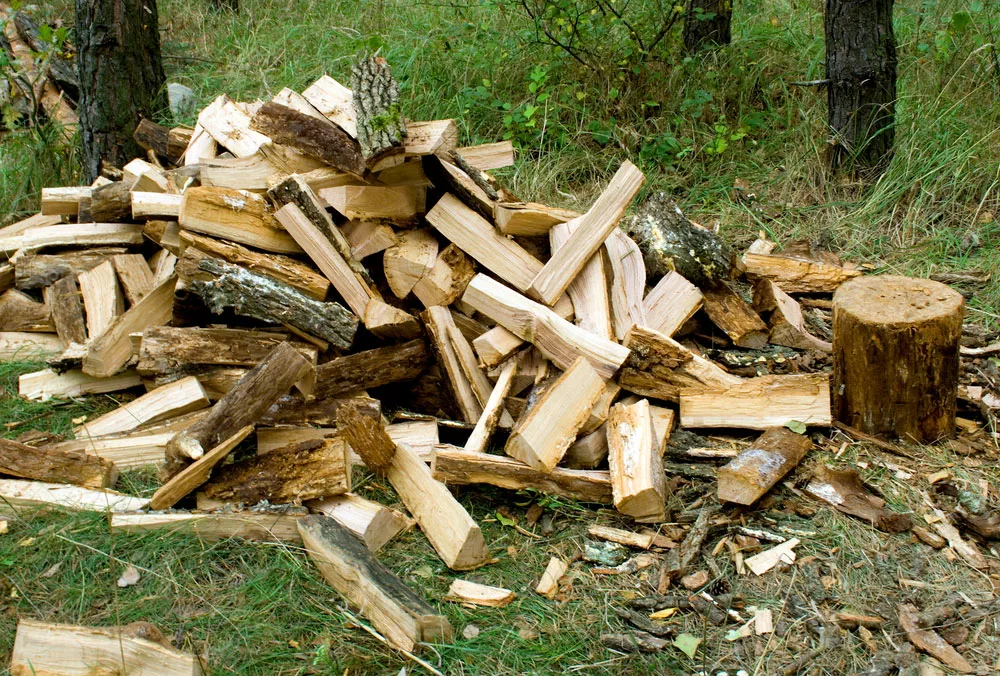
(Firewood picture)
Conclusion
Sometimes, buying seasoned firewood is costly and uneconomical in the long run. Therefore, if you have space in your yard, you should try seasoning your firewood. Luckily, we’ve gone over the most important aspects of seasoning firewood.
Finally, don’t hesitate to contact us if you have questions about seasoning firewood.
